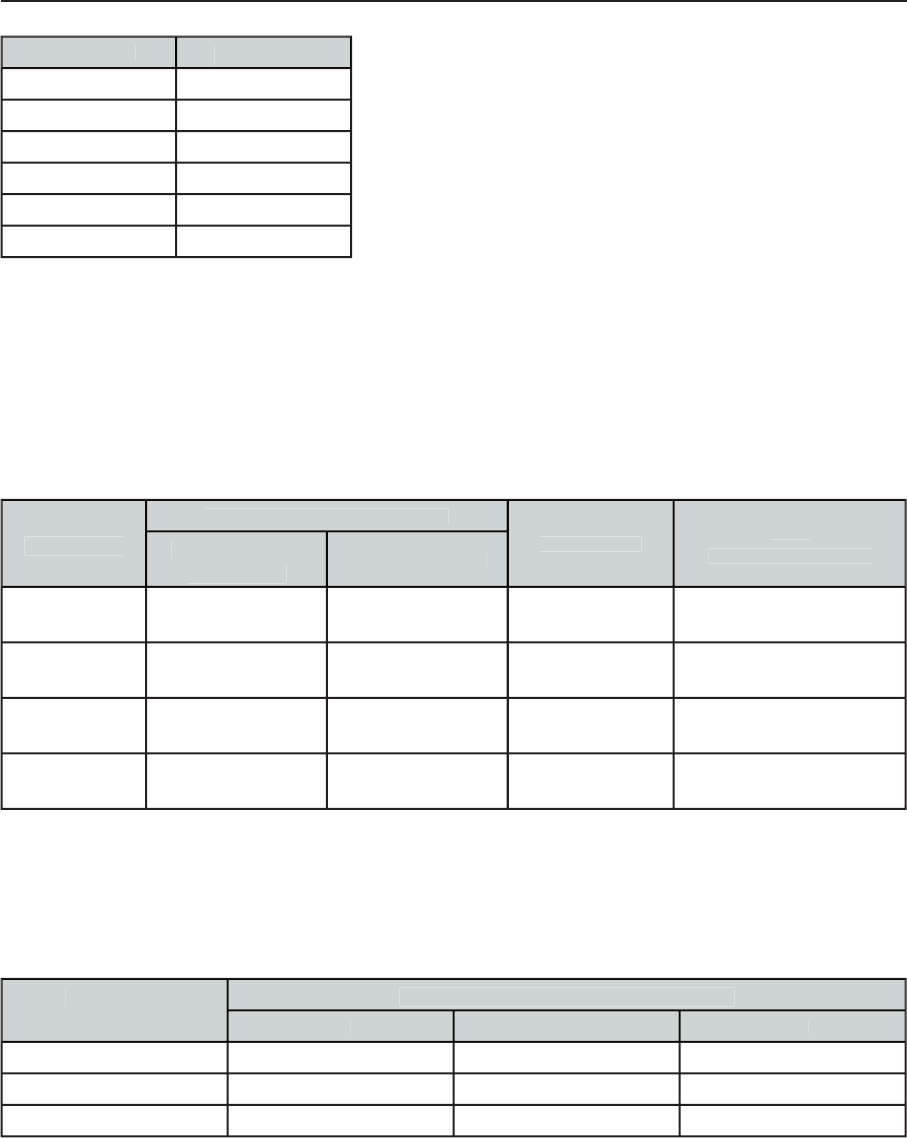
13
The CAN-bus allows using different data rates, with the data
rate being indirectly proportional to the bus length. Small
networks allow baud rates up to 500kbit/s.
For sizable dimensioned networks reducing the baud rate
(minimum 10kbit/s) is necessary.
The integration of repeaters is generally recommended
when the bus-length exceeds 1,000m.
Baud Rate
Bus Lenght
500 kbit/s
100 m
250 kbit/s
250 m
125 kbit/s
500 m
62.5 kbit/s
1000 m
20 kbit/s
2500 m
10 kbit/s
5000 m
CAN-Bus
CABLE SPECIFICATIONS
According to the ISO 11898-2 standard, CAN-bus data transfer cabling has to be carried out using
Twisted-Pair cables with or without shielding providing a characteristic impedance of 120
Ω
. Both ends
of a CAN-bus need to be terminated with 120
Ω
termination-plugs.
The maximum bus-length depends on the actual data transfer rate, the kind of data transfer cable
being used, as well as the total number of participants on the bus. The following table shows the most
essential coherencies for CAN-networks consisting of up 64 participants
:
Bus Length
Cable for data Transmission
Termination
max.
Data Transfer Rate
Resistance per
Unit Length
Cable Diameter
0 ... 40 m
< 70 m
Ω
/m
0.25 ... 0.34 mm²
AWG23, AWG22
124
Ω
1000 kbit/s bei 40 m
40 ... 300 m
< 60 m
Ω
/m
0.34 ... 0.6 mm²
AWG22, AWG20
127
Ω
500 kbit/s bei 100 m
300 ... 600 m
< 40 m
Ω
/m
0.5 ... 0.6 mm²
AWG20
150
Ω
... 300
Ω
*
100 kbit/s bei 500 m
600 ... 1000 m
< 26 m
Ω
/m
0.75 ... 0.8 mm²
AWG18
150
Ω
... 300
Ω
*
62.5 kbit/s bei 1000 m
*
With longer cables and many participants on the CAN-bus, termination resistors with higher impedance than the
specified 120
Ω
are recommended to reduce the ohmic load of the interface drivers and therefore the voltage drop
between the two cable ends
.
The following table is meant for first assessment of necessary cable diameters for different bus lengths
and bus-participant numbers
:
Bus Length
Number of Appliance on the CAN-Bus
32
64
100
100 m
0.25 mm² bzw. AWG24
0.34 mm² bzw. AWG22
0.34 mm² bzw. AWG22
250 m
0.34 mm² bzw. AWG22
0.5 mm² bzw. AWG20
0.5 mm² bzw. AWG20
500 m
0.75 mm² bzw. AWG18
0.75 mm² bzw. AWG18
1.0 mm² bzw. AWG17
Additionally, the length of branch lines – for participants that are not directly connected to the CAN-bus
– is also of importance. For data transfer rates of up to 125kbit/s, the maximum length of a single stub
cable should not exceed 2m. For higher bit rates a maximum length of only 0.3m is still permissible.
The entire length of all branch lines should not exceed 30 m.
General Note:
As long as only short distances (up to 10m) are concerned, common RJ-45 patch cables with
100
Ω
characteristic impedance (AWG 24 / AWG 26) can be used for the cabling inside of a
rack-shelf system. The previously outlined guidelines for network cabling are mandatory as far
as the rack-shelve interconnection or xed installations are involved
.
CAN-BUS


















